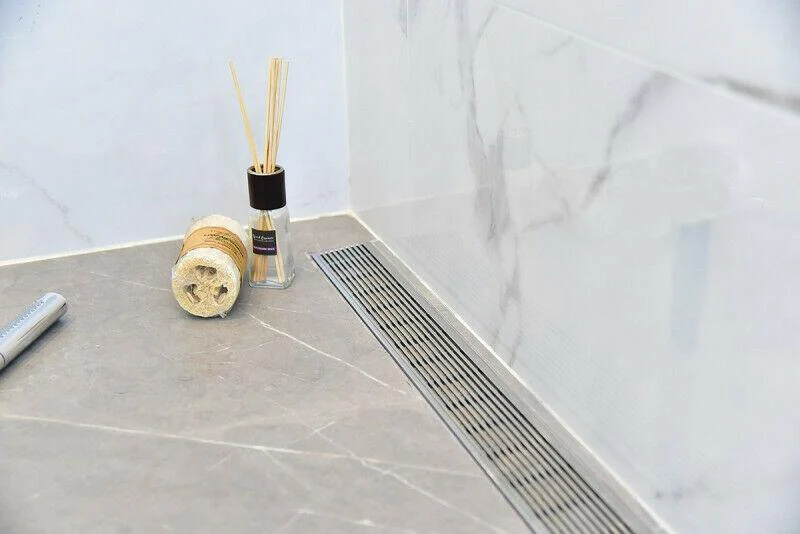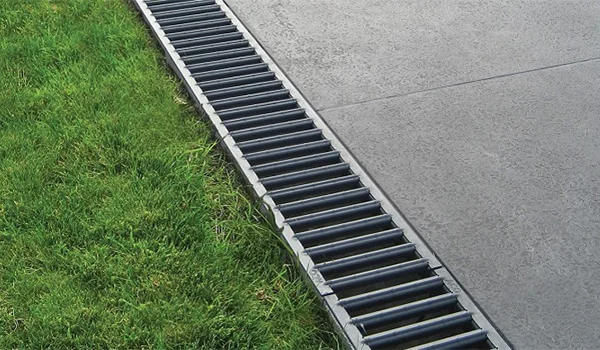Discover eco-friendly drain grate materials! Explore 7 sustainable options for resilient infrastructure in our comprehensive guide. In the pursuit of creating sustainable and eco-friendly infrastructure, every aspect of construction must be carefully considered, including drain grates. Drain grates play a crucial role in managing stormwater runoff, preventing flooding, and maintaining the integrity of roads and pathways. However, traditional drain grates made from materials like concrete, steel, and plastic can have negative environmental impacts. To address this issue, engineers and designers are turning to more sustainable alternatives. In this article, we’ll explore seven sustainable drain grate materials that are paving the way for eco-friendly infrastructure.
Contents
Drain Grate Materials: Recycled Plastic
Plastic pollution is a significant environmental concern, but recycled plastic drain grates offer a solution. These grates are made from post-consumer or post-industrial plastic waste, diverting materials from landfills and reducing the need for virgin plastic production. Recycled plastic drain grates are durable, lightweight, and resistant to corrosion, making them an excellent choice for various infrastructure projects. Effective drain grate materials can help mitigate clogged drains by facilitating efficient water flow and debris filtration.

Cast Iron:
While traditional cast iron drain grates have been used for centuries, modern manufacturing techniques have made them more sustainable. Cast iron is highly durable and can last for decades with minimal maintenance. Additionally, many cast iron drain grates are made from recycled iron, further reducing their environmental footprint.
In recent years, there has been a growing emphasis on incorporating recycled materials into construction products, and cast iron drain grates are no exception. Many manufacturers now use recycled iron in the production of cast iron drain grates, further enhancing their sustainability credentials. By utilizing recycled content, these grates help divert waste from landfills and reduce the demand for virgin materials, thereby lowering their environmental impact.
Stainless Steel:
Stainless steel drain grates are known for their strength, corrosion resistance, and aesthetic appeal. They are often made from recycled stainless steel scrap, making them a sustainable choice for infrastructure projects. Stainless steel drain grates are ideal for areas where corrosion is a concern, such as coastal regions or environments with high levels of pollution.
One of the key advantages of stainless steel drain grates is their sustainability. Many stainless steel products are made from recycled stainless steel scrap, which significantly reduces the environmental impact of manufacturing. By using recycled materials, the demand for virgin stainless steel is reduced, leading to lower energy consumption and fewer greenhouse gas emissions.
Aluminum:
Aluminum drain grates are lightweight, corrosion-resistant, and easily recyclable. They are commonly made from recycled aluminum, which requires significantly less energy to process than virgin aluminum. Aluminum drain grates are well-suited for pedestrian walkways, bike paths, and other areas where weight is a consideration.
Bamboo:
Bamboo is a rapidly renewable resource that offers unique advantages as a drain grate material. It is lightweight, strong, and naturally resistant to moisture and pests. Bamboo drain grates have a distinct aesthetic appeal and can blend seamlessly with natural surroundings. Additionally, bamboo cultivation helps mitigate carbon dioxide emissions and promotes soil health.
Rubber:
Rubber drain grates are made from recycled rubber tires, providing a sustainable solution for managing stormwater runoff. These grates are flexible, durable, and resistant to cracking and corrosion. Rubber drain grates are often used in green infrastructure projects, such as rain gardens and bioswales, where their permeable design allows water to infiltrate the soil.
Permeable Concrete:
Traditional concrete is impervious, contributing to stormwater runoff and pollution. Permeable concrete, on the other hand, allows water to pass through, reducing runoff and replenishing groundwater supplies. Permeable concrete drain grates are made with recycled aggregates and binders, making them a sustainable alternative to traditional concrete grates. Permeable concrete is made using a mixture of cement, aggregates, and water, similar to conventional concrete. However, the key difference lies in the absence of fine aggregates, such as sand, which creates voids within the concrete mixture. These voids allow water to flow through the material, reducing surface runoff and helping to replenish groundwater supplies.
Conclusion.
Sustainable drain grate materials offer an opportunity to reduce the environmental impact of infrastructure projects while improving stormwater management and resilience. By choosing materials such as recycled plastic, cast iron, stainless steel, aluminum, bamboo, rubber, and permeable concrete, engineers and designers can create eco-friendly infrastructure that supports both human communities and the natural environment. As sustainability continues to be a priority in construction and urban planning, innovative solutions like these will play a crucial role in building a more resilient and environmentally friendly future.



